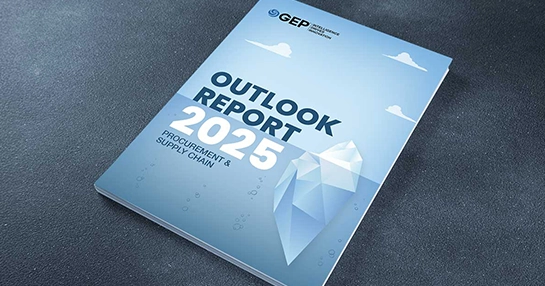
All You Need to Know About Agentic AI in Procurement
- Agentic AI systems can think, act and execute on their own.
- Unlike AI agents, agentic systems orchestrate decisions across systems and teams and work toward defined outcomes with minimal handholding.
- These systems offer a fundamentally different way to run procurement – one centered on goals, not rigid workflows.
June 11, 2025 | Procurement Software 4 minutes read
Agentic AI is finally here. And it is set to make a huge impact on business operations. By 2028, 33% of enterprise software applications will include agentic AI, enabling 15% of day-to-day work decisions to be made autonomously, according to a Gartner projection. But unlike any other technology implementation, it is not merely a system upgrade, modular add-on, or a new interface layer. It transforms workflows and changes how teams interact with data or make decisions.
In case of procurement, it changes how teams work and connect to the broader enterprise. It defines a new approach to how people, processes and technology come together around procurement’s strategic goals.
Some businesses are already using agentic AI to coordinate sourcing events, assess supplier risks, and optimize strategies – all with minimal manual intervention. What really is agentic AI, and why is it so useful for procurement? Let’s find out.
What is Agentic AI?
In most cases, procurement technology still works on predefined rules and triggers. For example, if a purchase order exceeds a fixed value, the system routes it for managerial approval. Likewise, a three-bid policy starts automatically when sourcing a new supplier. These workflows are helpful, no doubt. But they can handle situations that have been explicitly programed on them.
Agentic AI systems add a layer of planning.
Instead of waiting for inputs, they define objectives, evaluate options, weigh trade-offs and even act. In this way, they orchestrate decisions across systems and teams, without too much handholding.
Instead of merely acting on instructions, agentic AI systems can coordinate actions across systems, teams and agents. They can even remember outcomes and learn from past feedback.
Looking to Align Procurement with Larger Business Goals?
Leverage AI-powered Technology to Transform Procurement into a Strategic Business Unit
From Gen AI to AI Agents to Agentic AI
Not very long ago, we were all talking about generative AI. It showed machines could write, summarize and converse in ways that felt natural. But while early LLMs impressed with language generation, they were weak in enterprise reasoning. Then came AI agents promising task-level automation. These agents are designed to follow workflows. They can complete predefined tasks. But they are dependent on instructions and lack adaptability.
Capability | Conventional Procurement Systems | AI Agents | Agentic AI |
|---|---|---|---|
| Autonomy | Fully manual or rule-based workflows | Executes when prompted | Acts on defined objectives |
| Planning | Step-by-step workflows coded by humans | Executes fixed sequences | Plans and adapts across multiple steps |
| Context Awareness | Operates in isolated systems | Uses current input and defined logic | Incorporates dynamic signals and history |
| Collaboration | Requires human intervention at each step | Responds to instructions | Coordinates across systems, teams and agents |
| Learning & Memory | No memory or learning capability | Stateless, task-based | Remembers outcomes and learns from feedback |
Today’s agentic AI systems can pursue a goal and work toward it by exploring data, orchestrating workflows, and engaging users only when needed. For example, they can understand a category strategy, detect when it’s no longer working, and recommend a shift with supporting data.
How Procurement Can Benefit from Agentic AI
To make the most of agentic AI, procurement needs to rethink how it defines value, uses data, and engages with technology. Here are four priorities for procurement:
Set goals:
At the outset, procurement must clearly define the desired outcomes. It should align these outcomes with business goals. For example, procurement may want to reduce tail spend, accelerate time-to-contract, or improve supplier diversity.
Identify high-value use cases:
Look for areas where traditional tools struggle. These may include managing high-risk suppliers or indirect spend. Assess whether agentic AI can add value in these areas by evaluating trade-offs and aligning teams and systems.
Organize data:
Check if procurement data is available in real time and in a usable format. With a connected view of supplier records, contracts, category strategies, pricing benchmarks, and risk indicators, agentic AI can understand the data landscape and deliver the desired outcomes.
Prepare your team:
People need to learn how to work alongside intelligent systems. Their role will change from managing transactions to guiding strategy and validating AI-generated recommendations. The focus will be more on oversight, exception handling and value delivery.
Tariffs Are Unpredictable, But Your Response Doesn’t Have To Be
Get real-time intelligence and a clear view of your exposure across suppliers, categories and regions
Choosing the Right Agentic AI Platform
Generic agentic AI platforms cannot provide the desired results. They lack procurement-specific intelligence, domain context and orchestration capabilities needed to handle real-world complexity.
Procurement teams need more than AI infrastructure. They need systems that understand contract terms, supplier dynamics, compliance policies, and category nuances – and can act on them in context.
This is a foundational shift that demands an ecosystem built for procurement. It also requires working with partners who understand how procurement works and what it’s accountable for.
Read this GEP white paper to learn more agentic AI use cases and how you can transform procurement with a native agentic AI platform.



